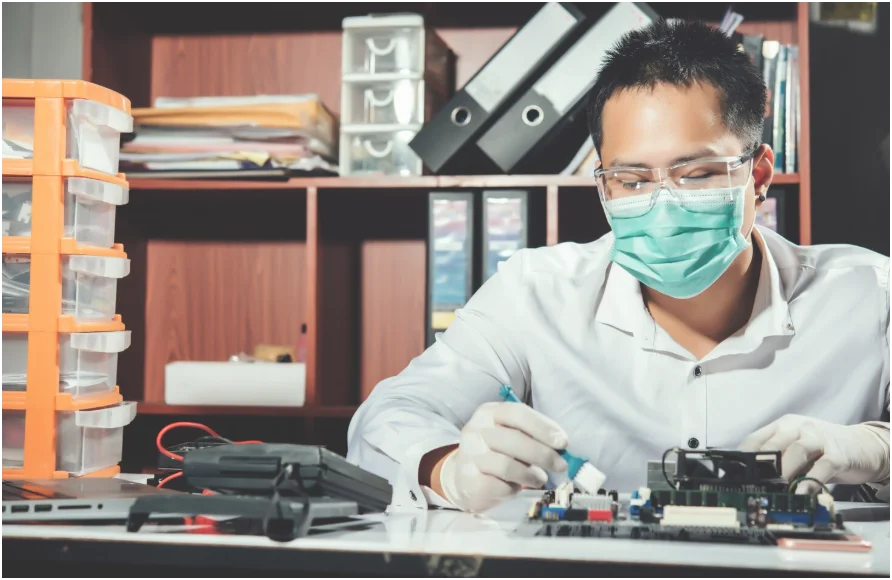Navigating the world of electronics production can seem complex, but it doesn’t have to be. For decades, companies have turned to overseas partners to streamline their operations, and for good reason. Sourcing China PCB printed circuit board assembly services offers a strategic advantage, combining cost-effectiveness, advanced technology, and immense production capacity. This article will guide you through the process, demonstrating how partnering with Chinese manufacturers can simplify your supply chain and accelerate your time to market. We will explore the benefits, outline the manufacturing process, provide tips for choosing the right partner, and look toward the future of this dynamic industry.
Why Choose China for PCB Manufacturing?
China has established itself as the global hub for electronics manufacturing. This leadership position is not accidental; it is built on a foundation of specific advantages that benefit businesses worldwide. When you choose China for your PCB needs, you tap into a mature ecosystem designed for efficiency and quality.
Unmatched Cost-Effectiveness
One of the most significant draws is the competitive pricing. The lower cost of labor, coupled with a highly developed supply chain for raw materials and components, allows Chinese manufacturers to offer prices that are often difficult for other regions to match. This cost advantage does not mean a compromise on quality. Instead, it enables companies to allocate their budgets more effectively, whether for research and development, marketing, or scaling production. By reducing manufacturing expenses, you can enhance your product’s market competitiveness or improve your profit margins.
Advanced Technology and High Capacity
Chinese PCB factories are not just about low costs; they are also at the forefront of manufacturing technology. These facilities have invested heavily in state-of-the-art equipment, including automated assembly lines, high-precision drilling machines, and sophisticated testing apparatus. This technological prowess allows them to produce a wide range of PCBs, from simple single-layer boards to complex, high-density multilayer designs. Furthermore, the sheer scale of production capacity in China means they can handle orders of any size, from small prototype runs to massive volumes for global product launches, all while maintaining consistent quality and meeting tight deadlines.
A Complete Supply Chain Ecosystem
Beyond the factory floor, China boasts a comprehensive electronics supply chain. Sourcing components is remarkably efficient, as most of the world’s electronic component manufacturers have a significant presence there. This proximity reduces lead times and shipping costs for necessary parts like resistors, capacitors, and integrated circuits. This integrated ecosystem means your PCB assembly partner can manage the entire process, from board fabrication to component sourcing and final assembly, providing a true turnkey solution that simplifies logistics and project management.
The PCB Manufacturing and Assembly Process Explained
Understanding the steps involved can demystify the process and help you manage your project more effectively. While specific details can vary between manufacturers, the general workflow for a turnkey PCB project is consistent.
Step 1: Design and File Submission
The process begins with your design. You will create your PCB layout using EDA (Electronic Design Automation) software, such as Altium Designer, Eagle, or KiCad. Once your design is complete, you will export the necessary manufacturing files. The most important of these are the Gerber files, which detail the copper layers, soldermask, and silkscreen, and the Bill of Materials (BOM), which lists all the components required for assembly. These files are submitted to your chosen manufacturer for review.
Step 2: DFM Check and Quotation
Upon receiving your files, the manufacturer performs a Design for Manufacturability (DFM) check. This crucial step involves engineers reviewing your design to identify any potential issues that could cause problems during production. They look for things like incorrect trace widths, insufficient spacing, or missing information. This review prevents costly errors and delays. Once the design is verified, the manufacturer will provide a detailed quotation based on the board’s complexity, quantity, and the components listed in the BOM.
Step 3: PCB Fabrication and Component Sourcing
After you approve the quote, production begins. The first stage is fabricating the bare printed circuit boards according to your Gerber files. Simultaneously, the manufacturer’s procurement team will start sourcing all the components specified in your BOM from their network of trusted suppliers. Handling both processes in parallel is a key advantage of turnkey services, as it significantly shortens the overall project timeline.
Step 4: PCB Assembly and Testing
With the bare boards fabricated and all components on hand, the assembly process starts. This typically involves using automated Surface Mount Technology (SMT) pick-and-place machines for smaller components and Through-Hole Technology (THT) for larger ones that require manual soldering. After assembly, the boards undergo rigorous testing. Standard procedures include Automated Optical Inspection (AOI) to visually check for soldering defects and In-Circuit Testing (ICT) or functional testing to ensure the board operates as designed.
Tips for Selecting the Right Manufacturer
Your choice of manufacturing partner is critical to your project’s success. With thousands of options available, it’s important to know what to look for.
Verify Certifications and Quality Standards
A reputable manufacturer will hold key industry certifications, such as ISO 9001 for quality management, UL for safety standards, and RoHS for compliance with hazardous substance restrictions. These certifications are not just formalities; they indicate a commitment to maintaining high standards in their processes and final products. Ask for proof of these certifications during your vetting process.
Evaluate Communication and Support
Clear and responsive communication is essential, especially when dealing with a partner in a different time zone. A good manufacturer will have a dedicated English-speaking sales and engineering support team. Evaluate their responsiveness during the initial inquiry stage. If they are slow or unclear in their communication before you’ve placed an order, it may be a red flag for the support you’ll receive once production is underway.
Start with Prototypes
Before committing to a large production run, always order a small batch of prototypes. This allows you to test the manufacturer’s quality, adherence to your design, and overall service. It provides a tangible product you can evaluate and test thoroughly. This step is a small investment that can save you from significant financial loss and headaches down the line. A manufacturer confident in their quality will be happy to facilitate a prototype order.
The Future of PCB Manufacturing in China
The landscape of Chinese manufacturing is continually evolving. While cost remains a factor, the industry is increasingly focused on climbing the value chain. There is a strong push toward advanced manufacturing, automation, and specialization. Future trends include a greater focus on high-frequency and high-speed PCBs for 5G and IoT applications, as well as flexible and rigid-flex PCBs for wearable technology and compact electronics. As factories become “smarter” through the integration of AI and data analytics, efficiency and quality will continue to improve, solidifying China’s role as a high-tech manufacturing leader, not just a low-cost one.
By understanding the advantages, processes, and best practices for partner selection, you can leverage China’s powerful PCB manufacturing and assembly capabilities to bring your electronic products to life easily and efficiently.







